Supermicro SYS-111C-NR Power Consumption
The SYS-111C-NR came with redundant 800W 80Plus Platinum power supplies. Most modern dual-socket servers have greater than 1kW PSUs, so it was nice to use a server with lower power requirements.
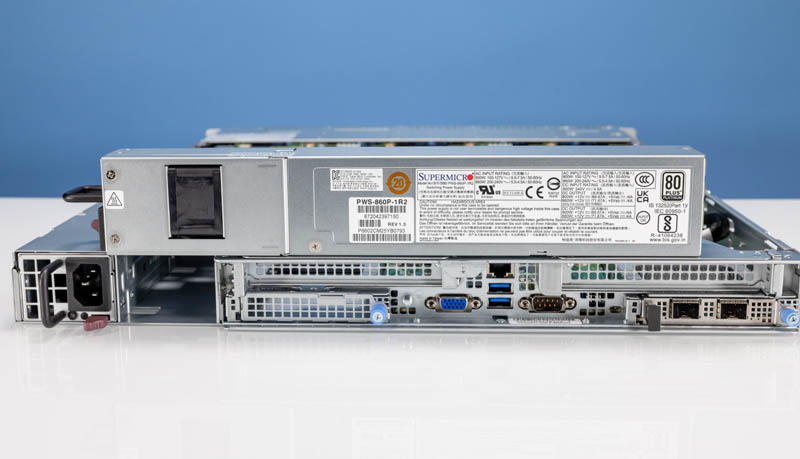
We saw idle power consumption of around 175W and our typical power consumption at 70% load was around 460W. The maximum we observed was 585W, but we do have to make a note. We had this system setup with both the NVIDIA ConnectX-7 400G NIC from PNY as well as a 100Gbps bypass network adapter. We were not running traffic on the cards, but the maximum observed had these cards installed but not being used. We were testing the viability of this as a networking platform (which it passed.) However, that is where the data came from.
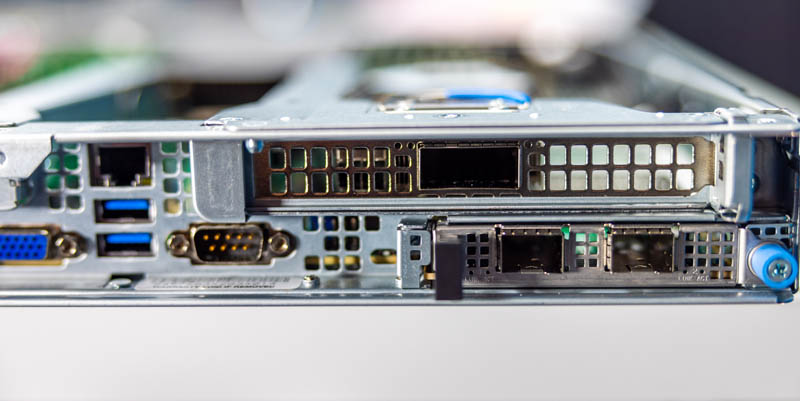
Still, this is a much more reasonable power consumption figure. If you are upgrading from dual 16 core Xeon E5-2600 V4 or 1st/ 2nd Gen Intel Xeon Scalable CPUs to a 32 core single socket Sapphire Rapids SKU, then you will likely see similar power consumption when consolidating. The high-end dual socket servers use so much more power these days that many existing racks are left partially filled. For a 1U platform, this is important because there is a trade off in systems going to 1U and achieving higher density.
STH Server Spider: Supermicro SYS-111C-NR
In the second half of 2018, we introduced the STH Server Spider as a quick reference to where a server system’s aptitude lies. Our goal is to start giving a quick visual depiction of the types of parameters that a server is targeted at.
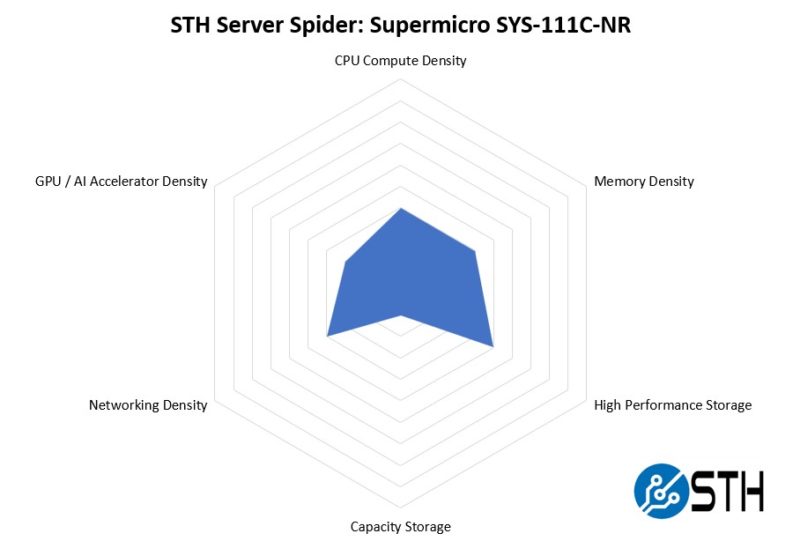
This is designed to be a general-purpose server. While it is a 1U dense form factor, it is also only a single socket solution so it is not meant to be the densest system out there. It is also not highly-optimized for the highest-end GPUs or networking accelerators, even though it can handle both and we showed this server with 400Gbps networking. Part of that is due to the fact that Supermicro has a wide variety of its new 4th Gen Intel Xeon Scalable “Sapphire Rapids” servers as part of the X13 generation. Here is Supermicro’s overview video launching the new line talking about this, and other servers.
As a teaser, there is someone familiar featured in that video.
Final Words
When we first heard we were reviewing this server, it seemed less exciting. A single-socket server when mainstream is dual-socket. Then we turned the server on and realized that it is awesome. Based on the 4th Gen Intel Xeon Scalable “Sapphire Rapids” platform, we get a large amount of PCIe Gen5 I/O along with reasonable power consumption and core counts.
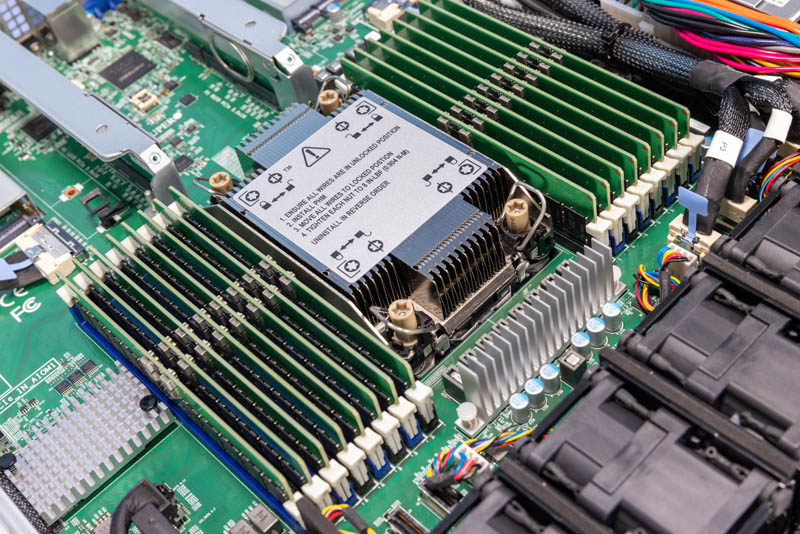
Most of the market is still in the 32-core per socket range and Supermicro now has a great platform to deploy single-socket servers while maintaining a high level of customization and I/O capability.
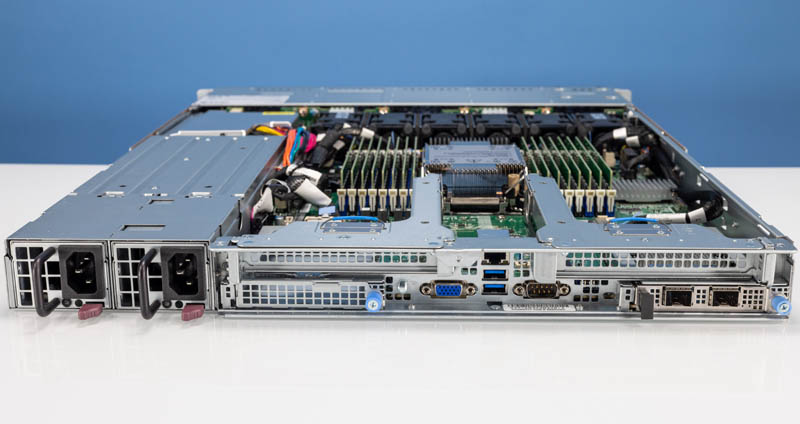
What put this server over the top for us was when we installed the NVIDIA ConnectX-7 from PNY in the server. For some sense of the bandwidth one can get from a single PCIe Gen5 slot, it is on the order of magnitude of 8x PCIe Gen4 x4 NVMe SSDs or two DDR5 DIMM slots. For some time, folks have considered single-socket inferior because there were major trade-offs. That is no longer the case for either Intel or AMD.
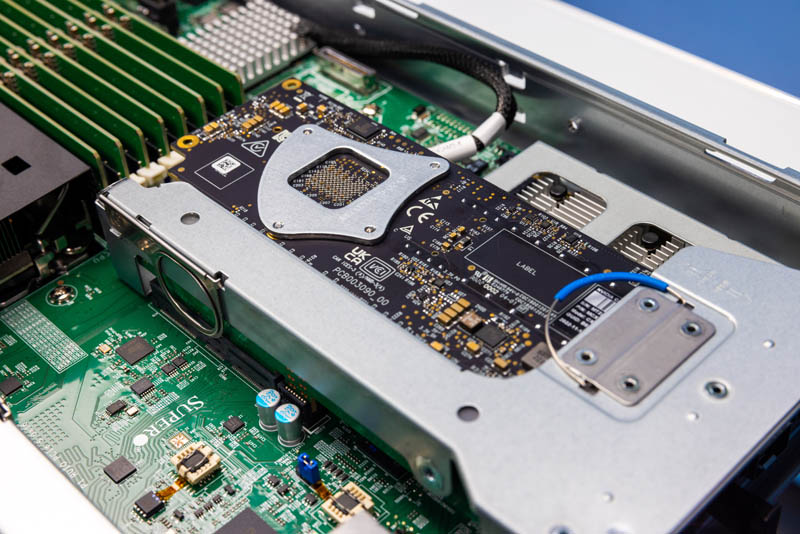
During the review process, we have been testing this server with a number of very high-end cards including not just the ConnectX-7 400G NIC, but also bypass adapters, DPUs, FPGAs with HBM onboard, and more. You are going to see more from this platform over the coming weeks from STH as it was extremely easy to work on.
Some may discount this platform because it is only a single-socket server. At the same time, the single socket server market is growing quickly making it a hot industry trend. The Supermicro SYS-111C-NR shows why single socket 4th Gen Intel Xeon Scalable servers are so potent and in a different class than previous generations.




Sike. SuperMicro is a terrible brand who putd out shit products. Tldr: buy a real server.
You choosed a bad day to complain about Supermicro. Yesterday they jumped a 28% in Nasdaq.